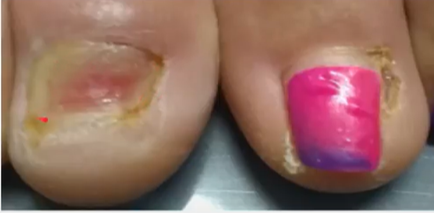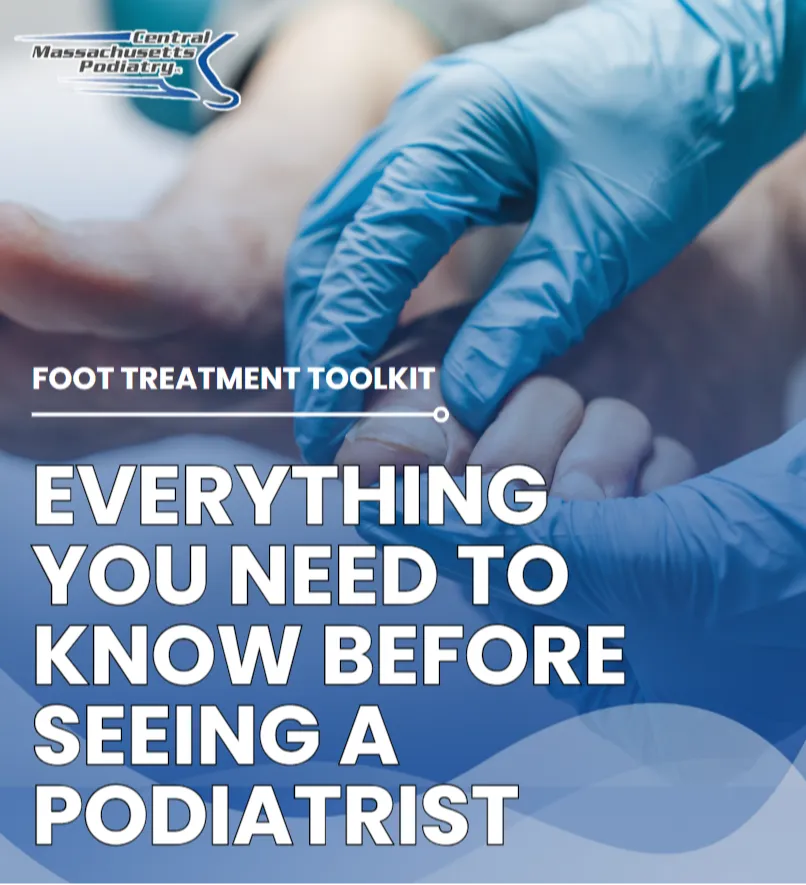What to Expect After an Ingrown Toenail Removal?

If you’ve had an ingrown toenail removed, or are scheduled for a matrixectomy, you may be wondering what recovery is really like. Are you noticing redness, swelling or drainage afterward? It’s normal to feel concerned about this. Maybe you’re worrying if these are signs of infection. Let’s walk through what you can expect after an ingrown toenail surgery or matrixectomy:
Important Note: Every individual’s healing is unique. You may consult your podiatrist for personalized advice.
What Normal Healing Looks Like After a Matrixectomy?
After an ingrown toenail removal or matrixectomy, the healing area can look a bit different than you might expect. The following can be considered as **normal signs **of healing:
- Tissue Buildup (Granulation Tissue): You may see soft, pinkish or reddish tissue forming where the nail edge was treated. This “healing tissue” is your body repairing itself and may look raised or thickened.

- Redness at the Nail Base or Dried Blood Drainage: Some redness near the base of the nail or along the edge is normal. You might also notice a bit of dried or crusted blood, which is common as the area scabs and heals.

- Mild Blistering: Small fluid-filled blisters can appear near the treated spot in the early days. This happens as the skin reacts to the procedure and friction, and it usually resolves on its own.

- Swelling: A bit of puffiness around the toe or nail fold is part of the normal inflammatory phase of healing. It should gradually improve over the weeks.

- Drainage Along the Nail Edge: Clear or slightly yellow drainage is common and can continue for several weeks. It’s part of your body’s natural cleaning process.

- Scab Formation or Callousing (During the 3rd and 4th Week): As the area begins to close and strengthen, you may see a dry scab form on top, or the skin may become thicker or calloused. This is a normal sign that the healing process is wrapping up.

Watch this video of our podiatrists and foot & ankle surgeon, Dr. Donald Pelto, discussing what it looks like after the Matrixectomy:

What Patients Can Do at Home
Taking care of your toe after the procedure is important:
- Rest: Avoid strenuous activities until you get clearance from your podiatrist.
- Soaks: Your podiatrist may recommend daily foot soaks to keep the area clean and reduce discomfort.
- Dressings: Change bandages as directed to keep the toe protected and absorb any drainage.
- Keep it clean: Wash your hands before touching the area, and wear open-toed or loose-fitting footwear.
When to call your podiatrist:
- Excessive bleeding that soaks through the bandage
- Red streaks moving away from the surgical site
- Fever or chills (a sign of possible infection)
- Severe pain or throbbing that doesn’t improve with prescribed pain medication
It’s always better to reach out if you’re unsure. Open communication with your podiatrist helps ensure peace of mind and a smooth recovery.
Takeaway
Before proceeding to any procedure, it is best to ask your doctor about the expected recovery and possible complications. This will help you make an informed decision. Don’t hesitate to ask your podiatrist for guidance.
At Central Massachusetts Podiatry, we’re here to guide you throughout the ingrown toenail removal treatment process. From preparations to post surgery care, our podiatrists and foot & ankle surgeons in Worcester and Westborough are here to provide you with expert care and instructions. Same-day and urgent care appointments are available if you need help with an ingrown toenail. Schedule your appointment today.
Related Blogs

Don’t Let Ingrown Toenail Pain Keep You Up at Night
You procrastinated making an appointment to see us, and…

Ingrown Toenail Treatment Process
This is my current treatment process for ingrown toenails…

Detached Toenail or Onycholysis Treatment Process
This is my current treatment process for detached toenail…








